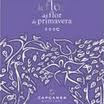Reviews of Capcanes Flor del Flor de Primavera 2010 and some Kosher for Passover Spirits.
By Joshua E. London and Lou Marmon
Washington Jewish Week April 9, 2014

Fairly quickly the perception of Spanish wine mediocrity changed. Every region in Spain now produces a wide variety of wines that combine Old World influences with a modern approach. Spain has become a source of flavorful, food-friendly wines that range from the collectable to quaffable, often at bargain prices.
Spain is essentially an elevated plateau with the vast majority of its vineyards planted high above sea level. The various unique microclimates created by the country’s rivers, valleys and mountain ranges have profound effects on the grapes and resulting wines. At the heart of the Spanish wine evolution is the substantial growth in the number of accepted wine regions classified as denominaciones de origen (or “designation of origin”), which is meant to control for quality and geographic authenticity. This has expanded consumer choice well beyond the familiar or traditional names like Rioja or Sherry, to such as Toro, Bierzo, Carinena and Ribera del Duero.
It is easily possible to match a different Spanish wine with every conceivable course of a meal. The principal white varietal is Albarino that produces a light-bodied and fruity wine with crisp acidity and mineral notes. The red wines are mostly based upon Tempranillo (also called Tinta Fina, Tinta del Pais and a host of other names), although other varietals, such as Mencia, Monastrell, Carinena and Granacha also produce first-rate reds.
The exceptional Capcanes Flor del Flor de Primavera 2010 ($75) is created from two different varieties of Granacha from vines 85 to 100 years old, southwest of Barcelona. It is an alluringly delicious kosher for Passover wine bursting with floral and red berry aromas along with layers of blueberry, raspberry and plum flavors, along with coffee, oak, dark chocolate and spice. A real treat for this year’s holiday that can also be beneficially cellared to enjoy a little further down the road.
Spirits-wise, it’s time for us to once again consider some kosher for Passover options. We began writing this weekly L’Chaim column just before Passover of 2011, and even though there are some truly fine certified kosher-for-Passover spirits available, we tend to dread having to, as it were, go through the motions on this. For as fine as an increasing number of these options are, our own spirits are always dogged by the seemingly inherent dissatisfaction kosher consumers bring to the subject—especially when pulling one or both of us aside for “personal” advice.
This collective “what are we stuck drinking this year” attitude is really out of place. Passover is a most joyous, festive period and the purely voluntary, self-regulated adherence to religious strictures against chametz (leavened foods and drinks) ought to be embraced with good cheer, rather than resigned, dead-end-job-like gloom. After all, we are only talking about hooch here and only for eight days (seven in Israel and in the Reform community).
At any rate, as we’ve also noted before, nongrain-based spirits cannot and should not be presumed to be acceptable as kosher for Passover just because they claim to be 100 percent fruit- or vegetable-based. Given the many industry accepted unlabeled processes that actually involve chametz, there is substantial good reason to insist upon kosher-for-Passover certification for your tipple.
For example, it is often thought that any 100-percent potato vodka should automatically be acceptable for Passover, since potato is not a grain. While potato vodka is a good candidate for being made kosher for Passover, for that to happen, the distiller would have to use only a kosher-for-Passover source for amylase, the enzyme that catalyses the breakdown of starch into sugar for fermentation. This is otherwise typically done with small amounts of malted barley, which is most definitely chametz; as an essential and normative part of the process, the resulting spirit cannot be said to be Passover acceptable. Also the equipment in most distilleries is used for lots of different spirits, which nearly always involve definite chametz.
So at a minimum, we strongly recommend checking with your friendly neighborhood, or preferred, kashrut authority.
Without further ado, here are some great options to imbibe this Passover or year-round:
• No. 209 Kosher for Passover Gin (40 percent abv; $40): Smooth, fragrant and tasty with traditional notes of juniper berry and citrus fruit, an herbal element lurks in the depths, and with a pleasing dollop of spice (like coriander and allspice), and a subtle undercurrent of sweetness. Complex and delicious.
• Zachlawi Vodka (40 percent abv; $35): This explicitly Russian-styled vodka is crisp, refined, faultless and delivers nicely. Another winning choice.
• Los Arango 100 percent Agave Reposado Tequila (40 percent abv; $45+): Named for Pancho Villa, this lovely silver tequila is complex, smooth and creamy, with aromas and flavors of green vegetables, brine, chili peppers, and with slightly sweet notes on the mid-palate. Very nice.
• Clear Creek Distillery Slivovitz Blue Plum Brandy (40 percent abv; $30; 375 ml. bottle): made from Oregon-grown Italian blue plums, this smooth, slightly off-dry, complex brandy offers notes of fresh, sweet, ripe plums and a little distinct pepperiness, with an absorbing, warm finish.
• Dupuy XO Cognac (40 percent abv; $85; comes in a nonkosher version, too, so make sure to check for the kosher certification): This smooth and aromatic cognac spent more than a dozen years maturing in Limousin French oak casks and showcases generous notes of vanilla and cinnamon, with a good and balanced mid-palate offering of dried fruits and additional notes of walnuts, dates and almonds, all leading up to an enjoyable and involved if slightly clipped finish. L’Chaim!
